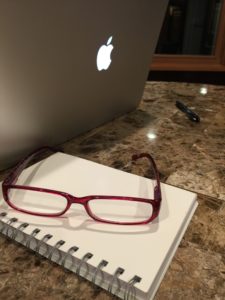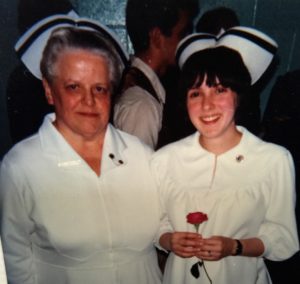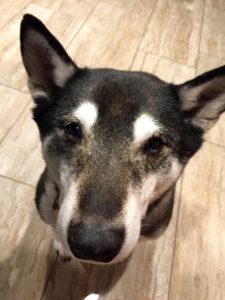Nowadays it’s more and more difficult to find unbiased news sources, and the only place I can seem to get “the facts and just the facts” are on reruns of Dragnet. Let’s face it, it’s in our nature as human beings to “frame” issues according to our “biases” which are shaped by our own experiences, beliefs, attitudes, values, principles, and interests.
I don’t believe the news outlets are reporting “fake news” per se, but you bet your sweet bippy I believe the information parceled out to the public is “slanted.” (Whenever you see a particular angle or aspect of a story played up, the story is said to be “slanted.”)
Rarely do journalists present both sides of an issue in an unbiased manner, allowing the news consumers to decide for themselves what to believe. News programs are typically “slanted” or “angled,” toward either a liberal or conservative audience.
Why would reporters, authors, writers, and journalists do this? It’s quite simple. The story is usually boring without a slant, and we want our stories to have an impact on you, we want to influence you, or maybe we just want you to think. Most of the time we can accomplish these goals by “slanting” a news article or report. It’s a pretty standard technique employed by us writerly types, and sometimes it is done consciously, and sometimes it is done unconsciously. Don’t the best stories make you “feel” something though?
How would I know? Oh, please. I do it all the time on my blog. Since I generally see life through a humorous lens, most of my posts (but not all) are intended to be entertaining, light-hearted and, dare I say, amusing.
In order to be a good writer, one must also be a good thinker. Let’s face it, that doesn’t always come naturally because emotions often cloud our thinking and judgment.
One of the best classes I ever took in college was called “Critical Thinking Skills.” In order to be excellent in any field, one cannot be a passive recipient of information and accept things at face value. We cannot rely solely on our instincts and intuitions. Critical thinking demands that we question findings, ideas and even our own assumptions to determine whether or not we are seeing the entire picture.
The ability to critically think was essential when I was working in the nursing field. In order to problem solve, I had to be open to seeing things from many different perspectives and I think it is equally valuable in my career as a writer today.
How does one begin to think critically? It starts with standard information gathering taught in Journalism 101, or in my case, nursing school.
I’ve always remembered the “5 Ws” and “1 H” of information gathering by memorizing the poem in Rudyard Kipling’s “The Elephant’s Child.” You’ll find it in his collection of “Just So Stories.”
“I keep six honest serving-men
(They taught me all I knew);
Their names are What and Why and When
And How and Where and Who.”
Have I thoroughly bored or confused you yet? Let’s inject a little levity while I try to illustrate my points.
Here are the simple, unbiased facts surrounding an incident that recently happened in my life.
What happened? – Poop happened.
Where did it happen? – On the neighbor’s lawn.
When did it happen? – Two days ago.
Why did it happen? – Because my dog was in the neighbors yard and had to poop.
How did it happen? – Because two doors in my house and a fence gate were left open.
A mundane occurrence in our neighborhood and certainly not news worthy, but hold on. Things are about to change.
Here is how Neighbor A (an animal lover and friend) reported and “slanted” the situation:
L.’s dog got out of her house and dashed over to romp with his little doggie friend next door. You should have seen them chasing each other around. They were so adorable! L’s dog, Rupert, got so excited, he pooped in his little friend’s yard, but no matter, L. quickly collected him and the little brown problem left on the lawn. I love watching those two dogs frolic together.
Here is how Neighbor B (not a huge animal fan, nor a good friend of mine)) reported and “slanted” the situation:
Two days ago L.’s dog ran away again. If you ask me, that woman and her husband shouldn’t be allowed to own an animal, let alone two. They are too careless and neglectful. Their dog chased and menaced the dog next door, and if that weren’t enough … it shit all over our neighbor’s lawn. It took L. fifteen whole minutes to get the little terrorist out of the neighbor’s yard and back into her house. Although L. had the decency to clean up the dog turd … after all it is the law … it never would have happened in the first place if L. and her husband were more responsible pet owners.
Here is how I did damage control and “spun” the situation to the other neighbors who may have heard the story from Neighbor B’s “slanted” perspective:
My silly dog is quite the escape artist. I don’t know how he keeps on getting out, but I’m highly suspicious he’s learned how to pick locks. He’s got such a crush on the dog next door and if she’s out, he’ll cross any barrier just to be near her. What can I say? He thinks he’s in love. I’ve tried telling him taking a massive poop in her yard is naughty, but since she rolled around in it once, he’s convinced that sort of thing impresses her. I’ve taken to carrying plastic bags and gloves in my coat pocket until I can talk some sense into him or make enough money to hire Cesar Millan … whichever one come first.
The outcome:
Since none of my neighbors have dressed like giant bowel movements and staged a protest outside of my house while shouting: “Hey, hey! Ho ho! That stupid dog has got to go!” I think I’ve successfully “spun” the situation for now.
So now that you know some journalistic secrets, talk amongst yourselves or better yet, leave a comment on the blog so I know someone is actually out there reading what I write.




Outstanding! You had me at “Critical Thinking Skills” but topped it off with your poop stories!
Ha! Doesn’t everybody love a good “poop” story now and then?
Well, first off- spelling of “judgment” (only ONE “e” in that word should be noted. The article was well thought out and articulated and illustrated. I enjoyed it and greatly appreciate this very hot topic in today’s world being addressed. Go girl, papa loves you for it!
Nice catch! Changing it now. Although judgement is an accepted spelling in British English, I shouldn’t use it because I don’t live there. If I stick to judgment, I won’t be judged in the USA.
You’re great!!!
Another Kool Aid drinker? I’ve got to set up that stand more often!
Beautifully illustrated point, L!
Thanks, Nancy!
Your dog is so cute but incorrigible! Thank you for the insightful story! I just so love your writing!
Do you or did you just drink the Kool Aid I was serving outside my house today?